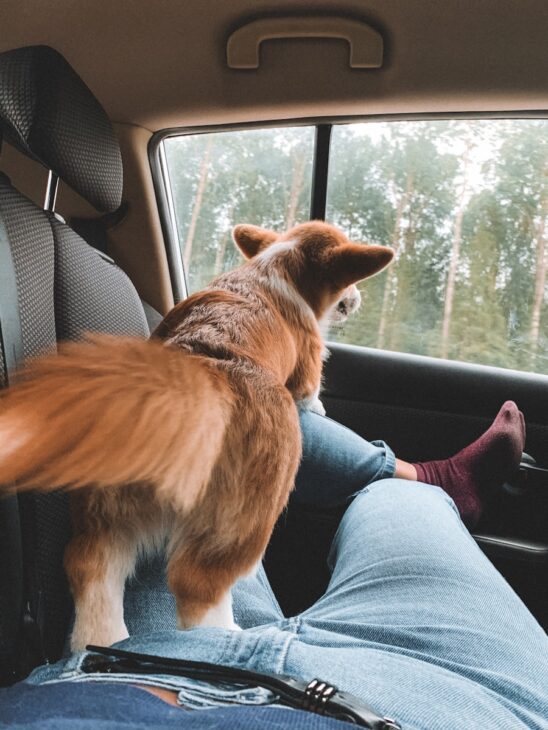Flying is stressful enough when it’s just you, your overstuffed carry-on, and the eternal question of “Did I pack my charger?” But throw a four-legged bestie into the mix, and suddenly you’re navigating airline rules, pet carriers, and whether Mr Whiskers can handle turbulence.
Don’t panic—we’ve got you covered. Here’s your complete, stress-busting guide to air travel with pets.

Regardless of your reasons for travelling with your pet(s), some important points should be considered. First, if you want to travel with a pet, you must ensure you can do so. While some airlines allow pets on their flights, not all do. You may be in a quandary if you want to fly from a small airport with one or two airlines.

Step one: can your pet actually fly?
Not all airlines are pet-friendly, which is wild considering how many of us treat our pets like actual children. Some carriers allow cats and dogs in the cabin, others insist they travel in the cargo hold, and a few simply say nope.
- Small regional airports = fewer options. If you’re flying out of a tiny hub, you may need to check larger airports nearby that have more pet-friendly carriers.
- International flights = stricter rules. Some countries (looking at you, Australia) have very intense quarantine regulations.
Bottom line? Before you even book your ticket, check the airline’s pet policy. It’ll save you major stress (and possibly tears at the check-in desk).

The cost nobody tells you about
Here’s the deal: your pet does not count as your free carry-on or checked bag. Sad, but true.
Expect to pay an additional fee—and the cost depends on whether your furry friend is flying with you in the cabin or taking the not-so-glamorous trip in the cargo hold. Cabin = cheaper, cargo = pricier.
Pro tip: Budget this in early so it doesn’t come as a nasty surprise.
Cabin or cargo: where will your pet sit?
This part depends on two things: your airline and your pet’s size.
- Cabin travel → Only available for smaller pets who can comfortably fit in an airline-approved carrier under the seat in front of you. Think small cats or toy-breed dogs.
- Cargo hold → Larger pets will usually have to travel in a ventilated crate in the baggage compartment. It’s not as scary as it sounds—airlines have strict safety rules—but it’s worth asking questions before you commit.
If your pet has anxiety, respiratory issues, or is an older traveller, ask your vet whether cargo travel is a safe choice.

The pet carrier rules you can’t ignore
Think of a pet carrier as your pet’s mini first-class suite (or at least economy with legroom). Airlines have very specific rules about size, ventilation, and materials.
Checklist before you buy:
✔ Must be big enough for your pet to stand up, turn around, and lie down comfortably.
✔ Hard-sided or soft-sided depending on the airline.
✔ Sturdy, leak-proof base.
✔ Clearly labelled with your name, number, and your pet’s name.
Don’t buy last minute—double-check with your airline before you shop.
The vet visit is non-negotiable
Before flying, most airlines will require a health certificate from your vet. This proves your pet is vaccinated, healthy, and fit to fly.
- Book a vet appointment within 10 days of travel (rules vary by airline).
- Make sure your pet is up to date on vaccinations.
- Ask about calming strategies if your pet is easily stressed. (Some vets recommend pheromone sprays, but avoid sedatives unless your vet insists—they can be dangerous at high altitudes.)
Travel day: survival tips for you & your pet
Okay, the big day is here. Deep breaths. Here’s how to keep it drama-free:
- Arrive early. You’ll need extra check-in time.
- Feed lightly. Give your pet a small meal 3–4 hours before the flight to avoid upset stomachs.
- Hydrate. Make sure your pet has water, but not too much right before boarding.
- Exercise first. Tire them out with a long walk or play session. A sleepy pet = a happy flyer.
- Pack a pet travel kit. Include treats, a favourite toy, waste bags, and a small blanket with familiar scents.
Choosing direct flights = a game changer
If you can, book a direct flight. Connections mean extra stress, more handling of your pet, and longer periods in transit. Sure, it may cost a bit more, but it’s totally worth it for peace of mind.
Safety first: watch out for red flags
Even with precautions, there are a few things to keep in mind:
- Extreme temperatures → Airlines often won’t allow pets to travel in cargo during very hot or very cold weather.
- Breed restrictions → Some airlines won’t carry snub-nosed dogs and cats (like pugs or Persians) because of breathing risks.
- Always trust your gut → If an airline seems sketchy about their pet policies, don’t risk it.

The emotional side of pet travel
Flying with your pet isn’t just about logistics—it’s about feelings. Your pet may be nervous, and honestly, you might be too. That’s normal.
But remember this: animals are incredibly adaptable. With preparation and a little patience, your pet will handle the journey better than you expect. And when you land? The relief of seeing their little face pop out of the carrier makes everything worth it.
Final thoughts: You’ve got this
Air travel with pets may sound like a logistical nightmare, but with the right planning, it’s totally manageable. Do your research, prep your pet, and expect a few hiccups along the way.

At the end of the day, whether you’re relocating across the country or simply refusing to holiday without your furry soulmate, the journey is just another adventure you get to share together.
So pack the treats, book the flight, and get ready—because your pet is about to become your cutest travel buddy ever.

